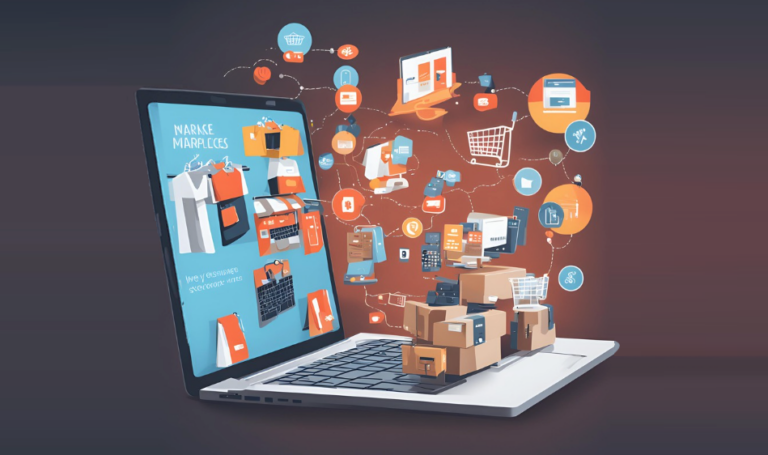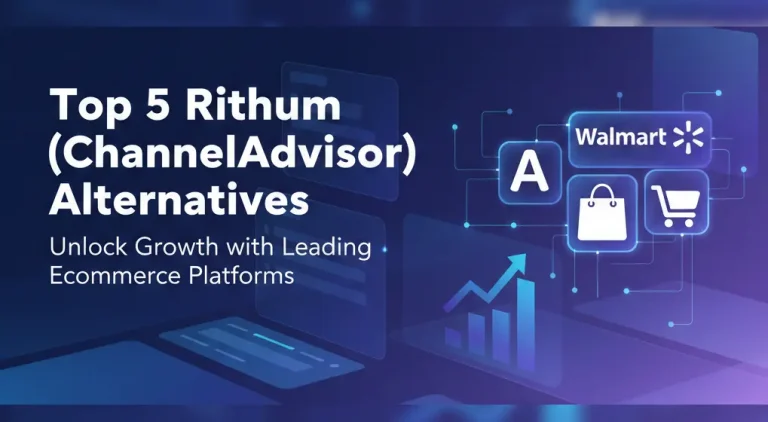
The Ultimate Guide to Choosing the Best E-commerce Order Fulfillment Software for Your Business
Looking for the perfect e-commerce order fulfillment software for your business? Look no further! In this ultimate guide, we will walk you through the key factors to consider when choosing the best solution for your unique needs. From inventory management to shipping and customer support, we have got you covered.
In a fast-paced world where customer expectations are higher than ever, finding the right order fulfillment software is essential for e-commerce success. With the right solution in place, you can streamline your operations, improve efficiency, and deliver a seamless experience to your customers.
But with so many options available, how do you know which one is right for you? That’s where our guide comes in. We will break down the different types of e-commerce order fulfillment software, discuss the essential features to look for, and provide actionable tips to help you make an informed decision.
Whether you are just starting your e-commerce journey or looking to upgrade your existing system, our guide will empower you to choose the best e-commerce order fulfillment software for your business. So let’s dive in and take your e-commerce operations to new heights!
Understanding the importance of e-commerce order fulfillment software
In a fast-paced world where customer expectations are higher than ever, finding the right order fulfillment software is essential for e-commerce success. With the right solution in place, you can streamline your operations, improve efficiency, and deliver a seamless experience to your customers.
E-commerce order fulfillment software plays a crucial role in automating and optimizing your order processing and shipping workflows. It enables you to manage your inventory, track shipments, and provide real-time updates to your customers. By centralizing and automating these tasks, you can save time, reduce errors, and focus on growing your business.
Choosing the right e-commerce order fulfillment software can be a game-changer for your business. It can help you scale your operations, handle increased order volumes, and meet the growing demands of your customers. With the right software, you can stay ahead of the competition and provide a superior shopping experience that keeps customers coming back for more.
Key features to consider when choosing e-commerce order fulfillment software
When evaluating different e-commerce order fulfillment software options, it’s important to consider the key features that will meet your specific business needs. Here are some essential features to look for:
1. Inventory management: A robust inventory management system is crucial for e-commerce businesses. Look for software that allows you to track stock levels, set reorder points, and manage multiple warehouses or fulfillment centers.
2. Order processing: Efficient order processing is essential for smooth operations. Choose software that automates order fulfillment, integrates with your e-commerce platform, and provides real-time order status updates.
3. Shipping integration: Seamless integration with shipping carriers is important for accurate shipping rates, label printing, and tracking. Look for software that supports multiple carriers and provides shipping optimization features.
4. Customer support: Good customer support is vital when issues arise. Ensure the software offers reliable support channels, such as live chat, phone, or email, and has a reputation for prompt and helpful responses.
5. Analytics and reporting: Data-driven insights can help you make informed business decisions. Look for software that provides detailed analytics and reporting capabilities, such as sales reports, inventory forecasting, and customer behavior analysis.
Remember, these are just some of the key features to consider. Depending on your business requirements, you might also need additional features like returns management, multi-channel integration, or advanced customization options. Evaluate your needs carefully and choose software that aligns with your long-term goals.
Different types of e-commerce order fulfillment software
E-commerce order fulfillment software comes in different types, each catering to specific business models and requirements. Understanding the different types can help you narrow down your options and choose the right fit. Here are the main types of e-commerce order fulfillment software:
1. Warehouse management systems (WMS): WMS software is designed to optimize warehouse operations, including inventory management, order processing, and shipping. It is ideal for businesses with their own warehouses or fulfillment centers.
2. Third-party logistics (3PL) software: 3PL software is specifically built for businesses that outsource their fulfillment to third-party logistics providers. It enables seamless collaboration and communication between your business and the 3PL provider.
3. Dropshipping software: Dropshipping software is tailored for businesses that rely on dropshipping as their fulfillment method. It facilitates communication between your online store, suppliers, and customers, automating order processing and inventory updates.
4. Order management systems (OMS): OMS software focuses on managing the entire order lifecycle, from placement to fulfillment. It integrates with various systems, such as e-commerce platforms, inventory management, and shipping carriers, to provide end-to-end visibility and control.
Consider your business model, scale, and specific requirements to determine the most suitable type of e-commerce order fulfillment software for your needs.
Popular e-commerce order fulfillment software providers
Now that you understand the importance of e-commerce order fulfillment software and the different types available, let’s explore some popular software providers in the market. These providers offer feature-rich solutions that can help you streamline your operations and enhance your customer experience. Here are a few noteworthy ones:
1.Willow Commerce Shipping Software: Willow Commerce is a leading e-commerce platform that offers its Order fulfillment. It provides end-to-end fulfillment services, including inventory management, order processing, and shipping. The network leverages machine learning algorithms to optimize fulfillment and deliver fast and reliable service.
2. ShipStation: ShipStation is a popular choice for small to mid-sized businesses. It offers a user-friendly interface and integrates with multiple e-commerce platforms and shipping carriers. With features like batch processing, order tagging, and customizable packing slips, ShipStation simplifies your order fulfillment process.
3. ShipBob: ShipBob caters to businesses of all sizes and specializes in providing fast and affordable fulfillment services. Their software integrates with popular e-commerce platforms and offers inventory management, order tracking, and analytics tools. ShipBob also has a network of fulfillment centers strategically located to ensure efficient shipping.
4. ShipHero: ShipHero is known for its comprehensive suite of fulfillment solutions. It offers features like inventory management, order routing, and real-time analytics. ShipHero also provides a mobile app that enables you to manage your operations on the go.
These are just a few examples, and there are many other reputable e-commerce order fulfillment software providers available. Research and compare the features, pricing, and customer reviews of different providers to find the one that best suits your business.
Factors to consider when evaluating e-commerce order fulfillment software providers
Choosing the right e-commerce order fulfillment software provider requires careful consideration. Apart from the features and reputation of the software itself, there are a few other factors to keep in mind:
1. Scalability: Ensure that the software can scale with your business as it grows. Consider the maximum order volume, number of SKUs, and storage space limitations of the software.
2. Integration capabilities: Check if the software integrates seamlessly with your existing systems, such as e-commerce platforms, inventory management software, and shipping carriers. Smooth integration eliminates manual data entry and reduces errors.
3. User-friendliness: A user-friendly interface and intuitive workflows are crucial for easy adoption and efficient usage. Look for software that offers a clean and intuitive interface, with helpful onboarding resources and customer support.
4. Security and reliability: Data security and system reliability are paramount. Ensure that the software provider has robust security measures in place to protect your sensitive information. Look for uptime guarantees and data backup protocols to minimize disruptions.
5. Cost and pricing model: Evaluate the pricing structure of the software, including any setup fees, monthly subscriptions, and transaction fees. Consider your budget and the value provided by the software to make an informed decision.
By considering these factors, you can ensure that you choose a reliable and scalable e-commerce order fulfillment software provider that aligns with your business goals.
Case studies: Success stories of businesses using e-commerce order fulfillment software
Real-life success stories can provide valuable insights into how e-commerce order fulfillment software can transform businesses. Let’s take a look at two case studies:
Case Study 1: Zulay kitchen
ZulayKitchen.com, a prominent online kitchen retailer ranked among Amazon’s top 10, faced significant challenges in fulfillment due to rapid growth. To address these issues, they adopted Willow Commerce e-commerce order fulfillment software, seamlessly integrated with their online platform. This solution facilitated real-time inventory updates and automated the order processing system, minimizing errors and enhancing overall efficiency. With the successful implementation of the Willow Commerce software, Zulay Kitchen successfully expanded its operations beyond Amazon’s Order Fulfillment, efficiently managed elevated order volumes, and accelerated shipping processes to provide a quicker and more reliable service to their customers.
Case Study 2: SoldThrough.com
SoldThrough.com, an emerging online fashion retailer, faced substantial fulfillment challenges amid rapid growth. In response, they implemented Willow Commerce’s order fulfillment software, seamlessly integrating it with their e-commerce platform, which included major partners such as Macy’s, Target, Nordstrom, and Shopify. The software ensured real-time inventory updates and automated order processing, resulting in a reduction of errors and a significant boost in overall efficiency.
Since incorporating Willow Commerce in 2023, SoldThrough.com has experienced remarkable growth. Their sales, which were initially $350,000.00, have soared to over $1,100,000.00. This success has allowed them to scale their operations effectively, manage increased order volumes, and provide expedited shipping services to their valued customers.
These case studies highlight the positive impact that e-commerce order fulfillment software can have on businesses. By automating and optimizing their order fulfillment processes, businesses can overcome challenges, enhance customer experience, and achieve growth.
How to integrate e-commerce order fulfillment software with your existing systems
Integrating e-commerce order fulfillment software with your existing systems is crucial for seamless operations. Here are some steps to help you integrate the software effectively:
1. Assess compatibility: Determine if the software is compatible with your existing systems, such as e-commerce platforms, inventory management software, and shipping carriers. Check for available integration options and APIs.
2. Consult with the software provider: Reach out to the software provider for guidance and support during the integration process. They can provide documentation, resources, and technical assistance to ensure a smooth integration.
3. Plan the integration strategy: Define your integration strategy, including the data flow, synchronization frequency, and any customizations required. Consider factors like inventory syncing, order syncing, and shipping label generation.
4. Test and validate: Before going live, thoroughly test the integration to ensure data accuracy, system stability, and proper functionality. Conduct test orders and check if all the data is flowing correctly between systems.
5. Train your team: Provide training to your team members who will be using the software. Familiarize them with the new workflows, features, and best practices for efficient usage.
Remember, each integration may have unique requirements and challenges. It’s important to communicate effectively with your software provider and allocate sufficient time for the integration process.
Pricing models and considerations for e-commerce order fulfillment software
Pricing models for e-commerce order fulfillment software can vary depending on the provider and the features included. Here are some common pricing models and considerations to keep in mind:
1. Subscription-based: Many software providers offer subscription-based pricing, where you pay a monthly or annual fee for using the software. Consider the pricing tiers and the features included in each tier to choose the one that aligns with your budget and requirements.
2. Transaction-based: Some providers charge based on the number of transactions or orders processed through their software. This model can be advantageous for businesses with low order volumes, as you only pay for what you use. However, it’s important to calculate the potential costs for your expected order volume.
3. Additional fees: Be aware of any additional fees that may apply, such as setup fees, onboarding fees, or fees for additional features. Consider the total cost of ownership, including all fees, when evaluating different pricing options.
4. Scaling costs: As your business grows, the cost of the software may increase. Consider how the pricing scales with your business and ensure that the software can accommodate your future needs without breaking the bank.
When considering the pricing of e-commerce order fulfillment software, it’s important to strike a balance between affordability and the value provided by the software. Evaluate the features, support, and scalability offered by different providers to make an informed decision.
Common challenges and solutions when implementing e-commerce order fulfillment software
Implementing e-commerce order fulfillment software can come with its own set of challenges. Here are some common challenges and their potential solutions:
1. Data migration: Transferring data from your existing systems to the new software can be complex. Ensure that you have a clear plan for data migration, including data mapping, cleansing, and validation. Consult with the software provider for guidance and support during this process.
2. Training and adoption: Getting your team members up to speed with the new software can be a challenge. Provide comprehensive training and resources to ensure that everyone understands the software’s features, workflows, and benefits. Encourage open communication and address any concerns or questions.
3. Change management: Implementing new software can disrupt existing processes and workflows. Plan for change management by involving key stakeholders, communicating the benefits of the software, and addressing any resistance or concerns. Monitor the implementation closely and make necessary adjustments as needed.
4. System integrations: Integrating the new software with your existing systems may require technical expertise. Consult with the software provider or consider engaging a third-party integration specialist to ensure a smooth integration process.
By anticipating and addressing these challenges proactively, you can minimize disruptions and maximize the benefits of implementing e-commerce order fulfillment software.
Conclusion: Making the right choice for your business
Choosing the best e-commerce order fulfillment software for your business is a critical decision that can impact your operations and customer experience. By understanding the importance of e-commerce order fulfillment software, evaluating key features, exploring different types of software, and considering popular providers, you can make an informed decision that aligns with your business goals.
Remember to assess factors such as scalability, integration capabilities, user-friendliness, security, and pricing when evaluating software providers. Learn from real-life success stories and plan for a smooth integration process to ensure a seamless transition.
With the right e-commerce order fulfillment software in place, you can streamline your operations, improve efficiency, and deliver a seamless experience to your customers. So take the time to evaluate your options, prioritize your business needs, and make a choice that empowers your business to reach new heights in the competitive e-commerce landscape.


